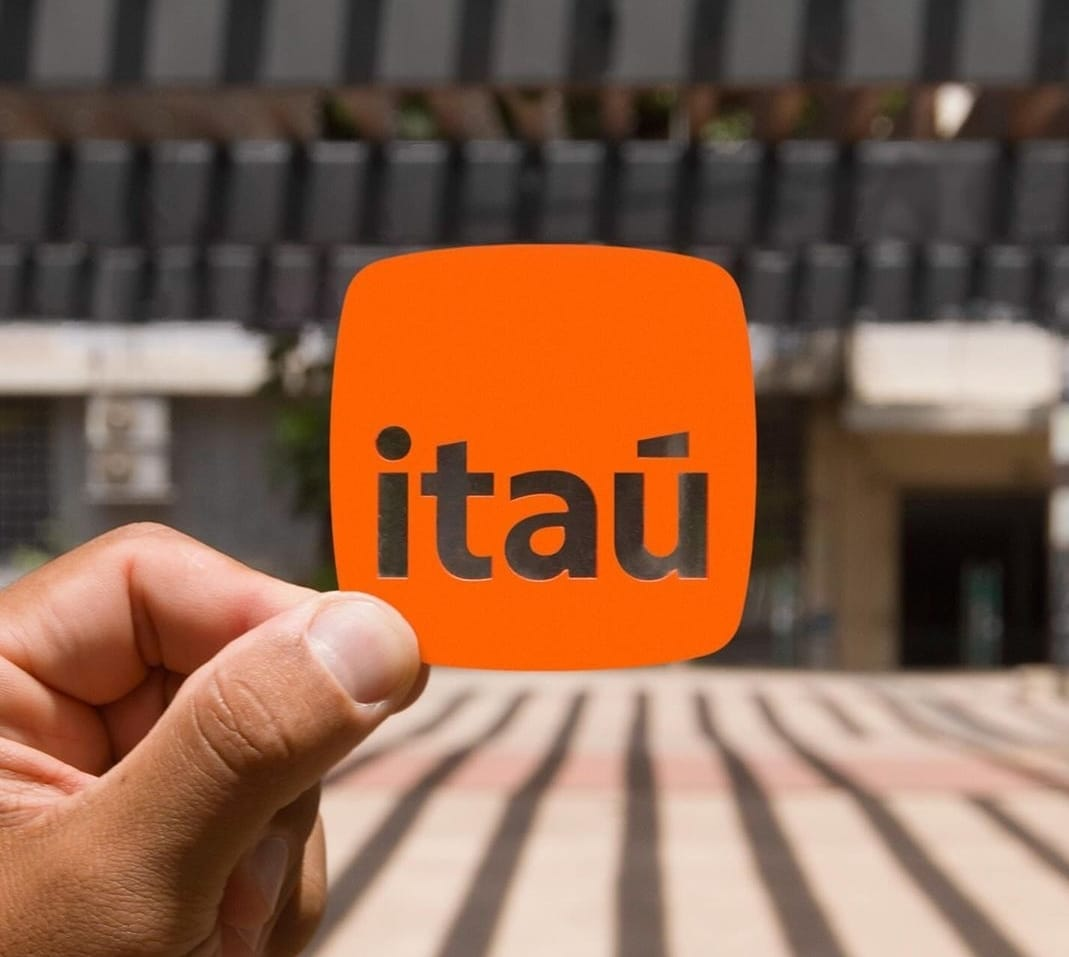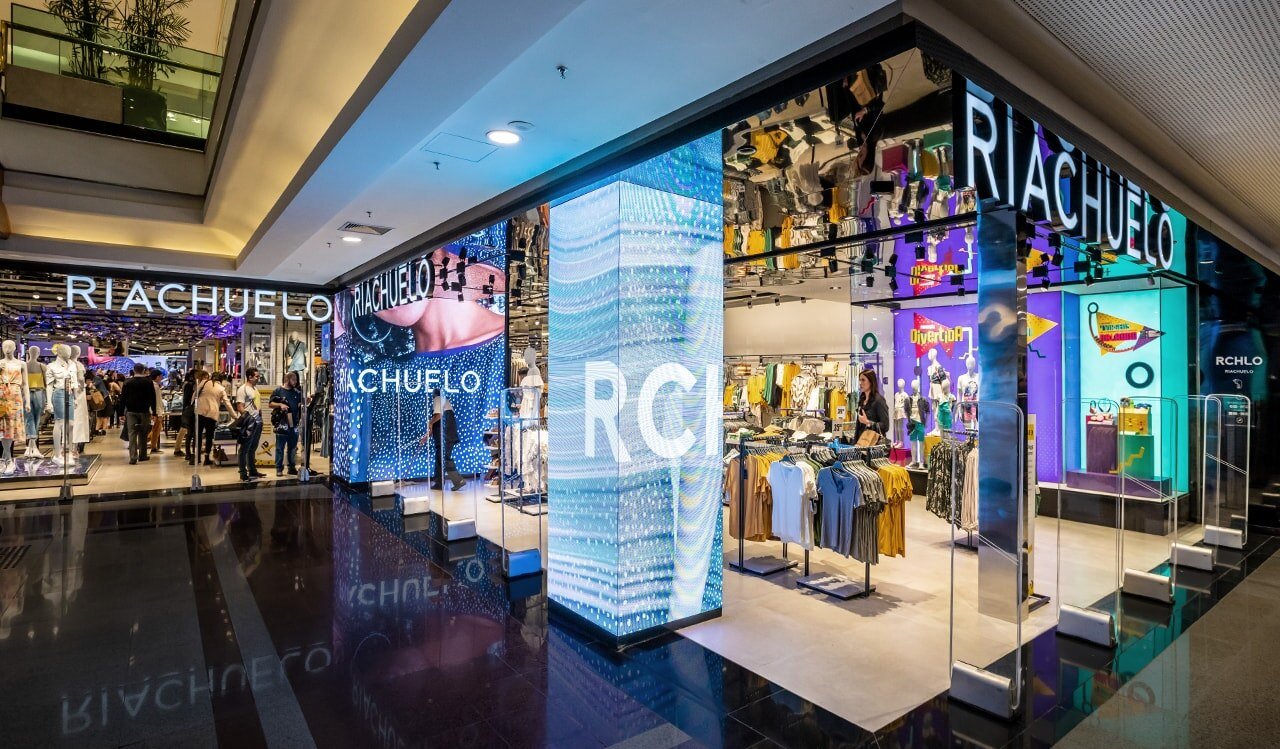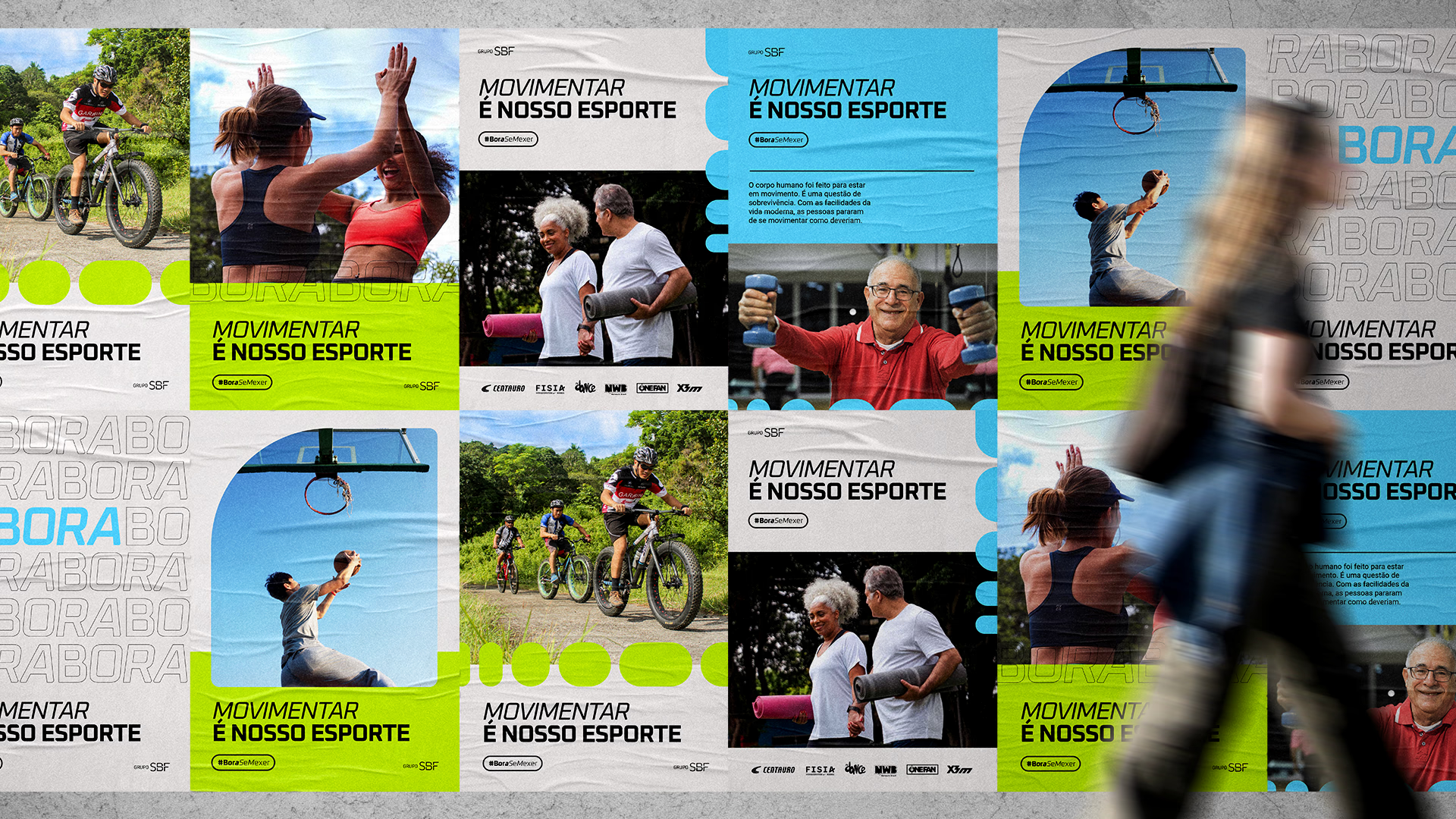
SBF Group
Nike’s tone and voice guideline
How might we give teams the autonomy to apply Nike’s tone and voice consistently across digital touchpoints, while minimizing dependence on centralized reviews?
TL;DR
We translated Nike’s global tone and voice into the digital context in Brazil, creating practical guidelines within Grupo SBF’s Design System. Through workshops, actionable documentation, and team training, we empowered product teams and reduced reliance on centralized reviews. The result: more consistent communications, a recognizable brand across all touchpoints, and greater team confidence in content creation.
Context
At Nike (via Grupo SBF, Brazil), there was a gap: global brand guidelines were inspirational, but not practical for daily digital content creation. Product squads, designers, digital marketing, and customer service teams lacked clear guidance.
There was inconsistent application of brand tone and voice across digital touchpoints, from mobile apps to web interfaces and many teams relied heavily on centralized reviews, creating bottlenecks and slowing content delivery.
Over 85% of 45 designers reported feeling uncertain when writing flows or messages in the product due to missing practical guidelines.
MY ROLE
Responsible for ensuring the content design approach was consistent, practical, aligned with the brand, and capable of scaling knowledge across the organization.
I worked closely with the Content Designer throughout research, ideation, and implementation, providing critical insights and reviewing key content decisions and oversaw validation of tone and voice guides within the Grupo SBF Design System, ensuring content was scalable and applicable across different products and brands.
Big cheers to Paula Berlim, Luana Gomes and Luiza Prade, content and design system responsables for this complex project.
Challenge
How might we give teams the autonomy to apply Nike’s tone and voice consistently across digital touchpoints, while minimizing dependence on centralized reviews?
MY Process & Methodology
Immersion & Research
- Conducted 9 in-depth interviews with design, marketing, branding, corporate, and CRM teams.
- Analyzed existing global Nike materials to understand brand tone and voice, focusing on gaps in product contexts.
- Performed 5 market solution analyses and 11 case studies/theoretical research on tone, voice, and content design systems.
- Collected 32 actionable insights to inform design decisions and recommendations.
ResearchOps template used to define methodologies based on our research questions
Main Findings
#1
Global guidelines were not practical for digital
- Existing branding and marketing materials served as inspiration but did not provide clear instructions for creating microcopy, product messages, or digital flows.
- Product teams lacked actionable examples for digital contexts.
#2
Lack of autonomy among content teams
- Designers and Product Managers often relied on centralized reviews to validate messaging and copy.
- This created bottlenecks and slowed content production.
#3
Inconsistency in tone and voice
- Messages varied across products, channels, and teams, resulting in fragmented digital experiences.
- Some brand elements were applied correctly, but without consistent alignment.
#4
Need for practical and visual documentation
- Teams needed easy-to-consult guides with clear, real-world examples, rather than long conceptual texts.
- Using tone and voice tables helped make the guidelines more actionable.
#5
Training and workshops increase confidence and application
- Hands-on training was essential for teams to correctly apply tone and voice.
- Workshops and educational materials improved autonomy and adoption.
#6
Integration with the Design System is strategic
- Embedding guidelines directly in the Design System facilitated scalable application and reduced dependency on centralized reviews.
insights based on team's discovery
Solution
The solution transformed Nike’s global tone and voice into practical, actionable, and scalable guidance for cross-functional teams.
In the multi-brand Design System of Grupo SBF, Content partnered with the DS team — special thanks to Luiza Prade, Paula Berlin and Luana Gomes, my perfect ICs who made it seem easy — to add a Content documentation layer to the DS design docs. This brought brand knowledge together in both form (design) and voice (content).
We grounded the framework on brand, context, and communication goals, defining voice guidelines, tone dimensions, and usage contexts.
To support content-first design decisions, we grouped digital product communications into categories:
- System feedback: error, success, welcome, and transition messages.
- Naming & informing: titles, descriptions, empty states, help, and supporting content.
- Calls to action: CTAs, empty states, forms, placeholders.
- Transactional comms: emails and push notifications.
- User controls: search, filters, selections, and content actions.
Based on Nike's global voice and reference wall, we complete the sentence considering concept and context.
Tone & Voice Documentation Integrated into the Design System
- Detailed guides with tone dimensions, vocabulary examples, style rules, and standard messages.
- Each Design System component included associated content instructions: error messages, empty states, notifications, CTAs, and forms.
- Teams could directly reference guidelines while designing flows, reducing dependency on centralized reviews.
Mapping Digital Contexts
- Identified main user interaction points and categorized types of messages and flows.
- Defined consistent tone and voice application for each context, with examples and suggested language.
- Used reference frameworks from NN/g and Torrey Podmajerski to calibrate tone/voice definitions to digital context.
Co-creation Workshops and Training
- Facilitated 2 workshops with cross-functional teams to translate abstract concepts into practical day-to-day decisions.
- Exercises ensured everyone understood when and how to use each tone and voice dimension.
Practical Tools and Examples
- Developed templates, cheat sheets, and checklists for quick decision-making.
- Developed 3 brand voice definitions and 4 tone dimensions, mapping them to real product scenarios.
- Provided real-world examples of correct and incorrect messages to make guidance tangible.
Feedback Loops and Iteration
- Guidelines were continuously improved based on team feedback and real usage.
- Adoption, confidence, and consistency metrics were monitored to validate impact.
Results
We learned that global brand guidelines are inspirational but need context to be actionable in products.
- Product teams started using the documentation proactively, especially for simple and medium-complexity flows — reducing dependence on centralized reviews.
- Tone & voice documentation became integrated into the Design System, scaling impact to other brands (e.g., Centauro, Studio78).
- The documentation became one of the most accessed resources within the Design System.
- Team confidence improved: content became more consistent, aligned in vocabulary and tone.
The documentation was accessible, practical, and tied to real workflows to ensure adoption. From that day on, the team had continuous training and iteration while new contexts and challenges arised. Integrating content and visual design in the Design System was critical to scale impact efficiently. Centralizing information helped motivate designers to connect the importance of content and assets consistency considering context.
Team
Marina Domingues - design manager
Luiza Prade - design system designer
Paula Berlim - content designer
Luana Gomes - content designer
Rafael Mello - researcher
Next cases
Itaú
Green Products Strategy
Read project
Riachuelo
Retail Self-Checkout MVP
Read project
SBF Group
DesignOps Strategy
Read project

SBF Group
Nike’s tone and voice guideline
How might we give teams the autonomy to apply Nike’s tone and voice consistently across digital touchpoints, while minimizing dependence on centralized reviews?
TL;DR
We translated Nike’s global tone and voice into the digital context in Brazil, creating practical guidelines within Grupo SBF’s Design System. Through workshops, actionable documentation, and team training, we empowered product teams and reduced reliance on centralized reviews. The result: more consistent communications, a recognizable brand across all touchpoints, and greater team confidence in content creation.
Context
At Nike (via Grupo SBF, Brazil), there was a gap: global brand guidelines were inspirational, but not practical for daily digital content creation. Product squads, designers, digital marketing, and customer service teams lacked clear guidance.
There was inconsistent application of brand tone and voice across digital touchpoints, from mobile apps to web interfaces and many teams relied heavily on centralized reviews, creating bottlenecks and slowing content delivery.
Over 85% of 45 designers reported feeling uncertain when writing flows or messages in the product due to missing practical guidelines.
MY ROLE
Responsible for ensuring the content design approach was consistent, practical, aligned with the brand, and capable of scaling knowledge across the organization.
I worked closely with the Content Designer throughout research, ideation, and implementation, providing critical insights and reviewing key content decisions and oversaw validation of tone and voice guides within the Grupo SBF Design System, ensuring content was scalable and applicable across different products and brands.
Big cheers to Paula Berlim, Luana Gomes and Luiza Prade, content and design system responsables for this complex project.
Challenge
How might we give teams the autonomy to apply Nike’s tone and voice consistently across digital touchpoints, while minimizing dependence on centralized reviews?
MY Process & Methodology
Immersion & Research
- Conducted 9 in-depth interviews with design, marketing, branding, corporate, and CRM teams.
- Analyzed existing global Nike materials to understand brand tone and voice, focusing on gaps in product contexts.
- Performed 5 market solution analyses and 11 case studies/theoretical research on tone, voice, and content design systems.
- Collected 32 actionable insights to inform design decisions and recommendations.
ResearchOps template used to define methodologies based on our research questions
Main Findings
#1
Global guidelines were not practical for digital
- Existing branding and marketing materials served as inspiration but did not provide clear instructions for creating microcopy, product messages, or digital flows.
- Product teams lacked actionable examples for digital contexts.
#2
Lack of autonomy among content teams
- Designers and Product Managers often relied on centralized reviews to validate messaging and copy.
- This created bottlenecks and slowed content production.
#3
Inconsistency in tone and voice
- Messages varied across products, channels, and teams, resulting in fragmented digital experiences.
- Some brand elements were applied correctly, but without consistent alignment.
#4
Need for practical and visual documentation
- Teams needed easy-to-consult guides with clear, real-world examples, rather than long conceptual texts.
- Using tone and voice tables helped make the guidelines more actionable.
#5
Training and workshops increase confidence and application
- Hands-on training was essential for teams to correctly apply tone and voice.
- Workshops and educational materials improved autonomy and adoption.
#6
Integration with the Design System is strategic
- Embedding guidelines directly in the Design System facilitated scalable application and reduced dependency on centralized reviews.
insights based on team's discovery
Solution
The solution transformed Nike’s global tone and voice into practical, actionable, and scalable guidance for cross-functional teams.
In the multi-brand Design System of Grupo SBF, Content partnered with the DS team — special thanks to Luiza Prade, Paula Berlin and Luana Gomes, my perfect ICs who made it seem easy — to add a Content documentation layer to the DS design docs. This brought brand knowledge together in both form (design) and voice (content).
We grounded the framework on brand, context, and communication goals, defining voice guidelines, tone dimensions, and usage contexts.
To support content-first design decisions, we grouped digital product communications into categories:
- System feedback: error, success, welcome, and transition messages.
- Naming & informing: titles, descriptions, empty states, help, and supporting content.
- Calls to action: CTAs, empty states, forms, placeholders.
- Transactional comms: emails and push notifications.
- User controls: search, filters, selections, and content actions.
Based on Nike's global voice and reference wall, we complete the sentence considering concept and context.
Tone & Voice Documentation Integrated into the Design System
- Detailed guides with tone dimensions, vocabulary examples, style rules, and standard messages.
- Each Design System component included associated content instructions: error messages, empty states, notifications, CTAs, and forms.
- Teams could directly reference guidelines while designing flows, reducing dependency on centralized reviews.
Mapping Digital Contexts
- Identified main user interaction points and categorized types of messages and flows.
- Defined consistent tone and voice application for each context, with examples and suggested language.
- Used reference frameworks from NN/g and Torrey Podmajerski to calibrate tone/voice definitions to digital context.
Co-creation Workshops and Training
- Facilitated 2 workshops with cross-functional teams to translate abstract concepts into practical day-to-day decisions.
- Exercises ensured everyone understood when and how to use each tone and voice dimension.
Practical Tools and Examples
- Developed templates, cheat sheets, and checklists for quick decision-making.
- Developed 3 brand voice definitions and 4 tone dimensions, mapping them to real product scenarios.
- Provided real-world examples of correct and incorrect messages to make guidance tangible.
Feedback Loops and Iteration
- Guidelines were continuously improved based on team feedback and real usage.
- Adoption, confidence, and consistency metrics were monitored to validate impact.
Results
We learned that global brand guidelines are inspirational but need context to be actionable in products.
- Product teams started using the documentation proactively, especially for simple and medium-complexity flows — reducing dependence on centralized reviews.
- Tone & voice documentation became integrated into the Design System, scaling impact to other brands (e.g., Centauro, Studio78).
- The documentation became one of the most accessed resources within the Design System.
- Team confidence improved: content became more consistent, aligned in vocabulary and tone.
The documentation was accessible, practical, and tied to real workflows to ensure adoption. From that day on, the team had continuous training and iteration while new contexts and challenges arised. Integrating content and visual design in the Design System was critical to scale impact efficiently. Centralizing information helped motivate designers to connect the importance of content and assets consistency considering context.
Team
Marina Domingues - design manager
Luiza Prade - design system designer
Paula Berlim - content designer
Luana Gomes - content designer
Rafael Mello - researcher
Next cases
Itaú
Green Products Strategy
Read project
Riachuelo
Retail Self-Checkout MVP
Read project
SBF Group
DesignOps Strategy
Read project


